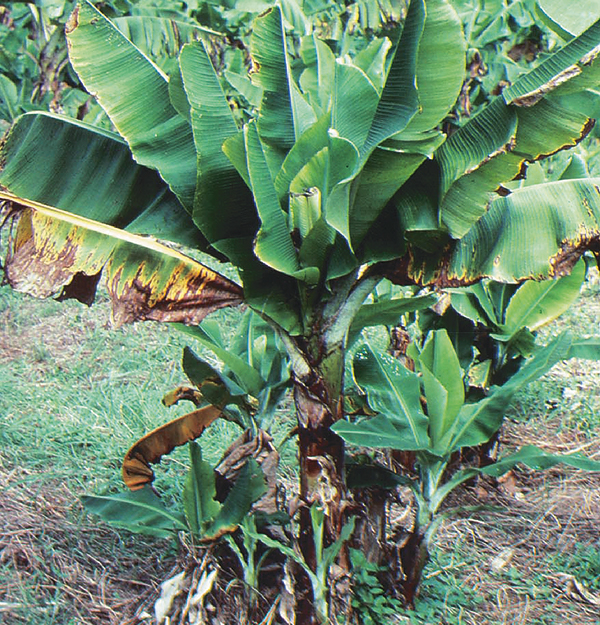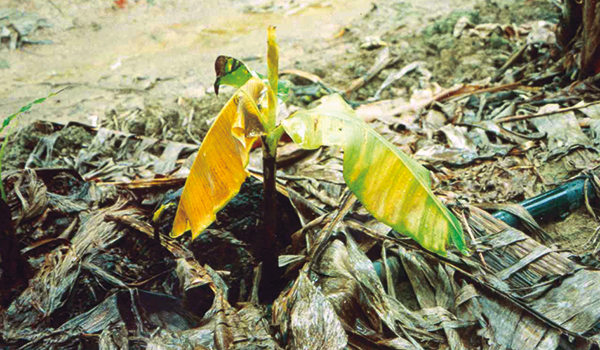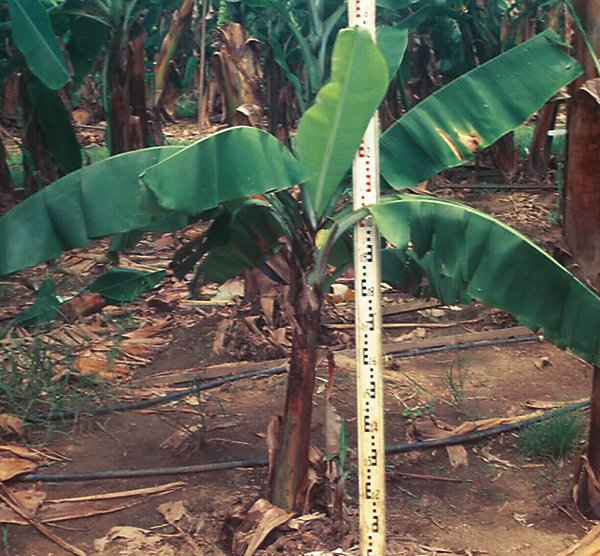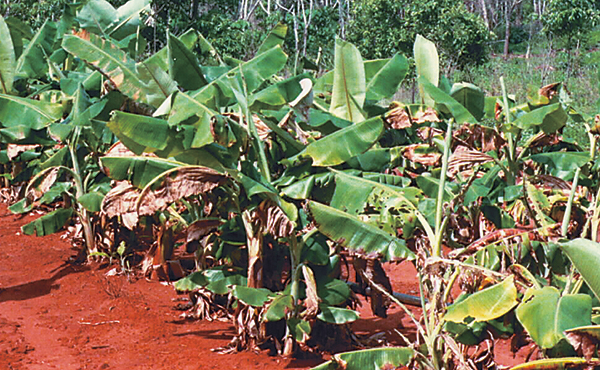Small and stunted plants
Banana bunchy top

Biosecurity Alert
Cause: The banana bunchy top virus (BBTV) which is spread on infected planting material and by the banana aphid, Pentalonia nigronervosa. BBTV is not present in tropical Australia, and movement of planting material is controlled by legislation.
Solution: There is no cure for this disease and all infected plants must be eradicated.
Biosecurity: Under state legislation, banana bunchy top disease must be reported. If you have seen plants with banana bunchy top symptoms within the Southern Queensland banana biosecurity zone, or the NSW Banana Bunchy Top Virus Control Zone contact the Banana Bunchy Top Hotline on 1800 068 371.
If you have seen banana bunchy top outside of these areas, you must report it within 24 hours to the Biosecurity authority in your state (Biosecurity Queensland on 13 25 23, or NSW DPI Biosecurity Hotline 1800 680 244) or the Exotic Plant Pest Hotline on 1800 084 881.
More Info:
Better Bananas
Australian Banana Growers Council
Department of Primary Industries
NSW Department of Primary Industries and Regional Development
Plant Health Australia
Banana weevil borer

Cause: Tunnelling by larvae of Cosmopolites sordidus in the corm. Sever infestation reduces plant vigour.
Solution: Use stem baits (traps) to establish the severity of the infestation. If numbers exceed an average of 4 weevils per trap, treat with appropriate insecticide. Pheromone traps are also available.
Burrowing nematode

Cause: Severe root damage caused by burrowing nematode affects the plant’s ability to take up water and nutrients from the soil.
Solution: Check a random sample of roots from the whole field to determine if nematodes are the problem and if a nematicide treatment is necessary.
Not enough water/dry conditions

Cause: Insufficient water for plant growth.
Solution: Use water scheduling techniques to supply sufficient water to meet the plant’s requirements.
Tissue-cultured off-type

